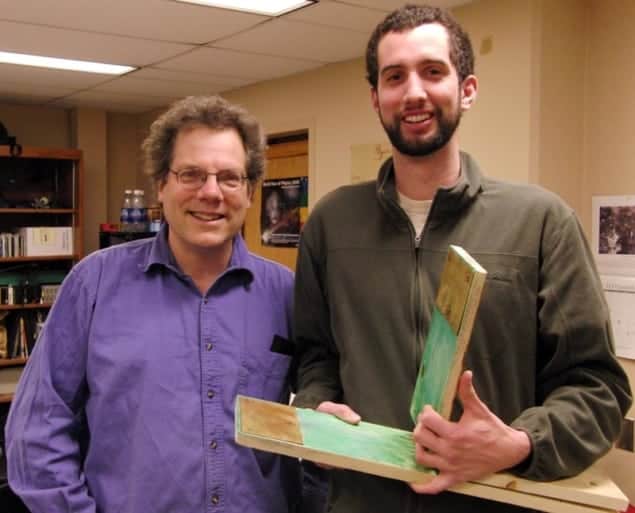
If you are a fan of CSI or other forensic-investigation TV dramas, you could be forgiven for thinking that all the minute details of a violent crime can be deduced simply by looking at the pattern of blood spatter. The reality, however, is that investigators are often unable to work out important details like whether the victim was standing or sitting when attacked – a distinction that can be crucial to a claim of self-defence.
Now, though, physicists Fred Gittes and Chris Varney from Washington State University in the US have devised a new technique for analysing blood spatter that – under certain conditions – gives the height at which the blood emanated from a victim. That information could, in principle, be used to conclude that a person was sitting, standing or lying on the floor when stabbed or shot. Gittes and Varney add that even when conditions are not appropriate for using their method, it fails in a very specific way that would alert investigators.
Projectile motion
Forensics investigators study the elliptical shapes of blood stains, which reveal the angles at which blood droplets impacted the floor or other surfaces. By tracing back from several different stains, it is possible to conclude where on the floor a person was standing when they were shot. However, finding the height from which the blood emerged is more difficult because the velocity of the blood is not known and it may have been launched in one of many vertical trajectories.
Gittes and Varney have been able to work around this problem by considering the Newtonian equations of motion of the droplets under gravity and simplifying the problem by assuming that the blood spurts out of the body over a narrow range of polar angles (the angle between the horizontal and the initial trajectory of the blood). They calculated that the tangent of the impact angle, θ, should vary linearly with 2/r, where r is the horizontal component of the distance that that the blood has travelled. When θ versus 2/r is plotted, the slope of the graph is equal to the height at which the victim was shot.
To test their analysis technique, the pair built a “clapper” device – similar to those used in forensics training – that creates blood spatter by placing a pouch of liquid between two boards and slapping them together. Rather than using real blood, which would have been impractical and unpleasant, Gittes and Varney used a mixture of chicken-wing sauce and dishwashing liquid to simulate its properties.
“The [analysis] method worked so well, in fact, that we did some numerical simulations to see why aerodynamic drag was not a problem,” Gittes told physicsworld.com, referring to the researchers’ initial assumption that they would have to adjust their technique to incorporate drag. The simulations showed that the technique was, Gittes adds, “relatively insensitive to drag”.
Failing in a good way
Their method does fail, however, if the blood is launched over a wide range of polar angles. Gittes says that he and Varney had expected to see a series of parallel lines in their graphs of θ against 2/r – each for a different launch angle – but none was visible, possibly because they did not have enough data to go on. “Such an approach might work in plots with an enormous number of data points,” Gittes speculates. Still, the null-result even with limited data is useful because it means that an erroneous height will not be calculated.
So have Gittes and Varney been hailed as heroes by forensic scientists? Not yet, according to Gittes. “We were a bit surprised by the difficulty of initiating physics discussions with the forensics community,” he says. “A great deal seems to be at stake regarding what is or is not considered acceptable practice.” However, Gittes is not deterred and calls for “other physicists and students of physics” to take his ideas further.
The research is reported on arXiv and has been accepted for publication in the American Journal of Physics.



